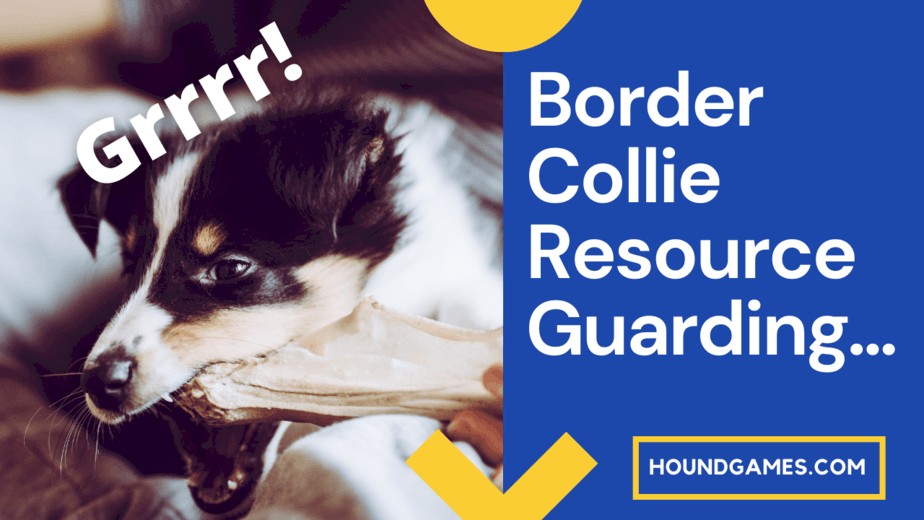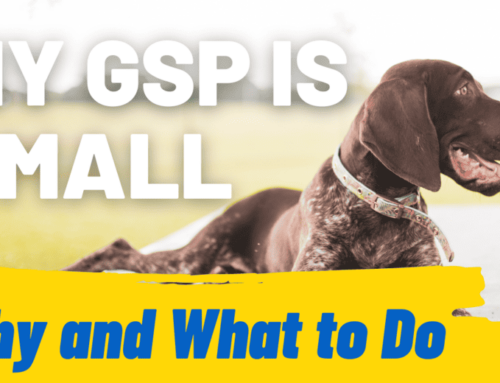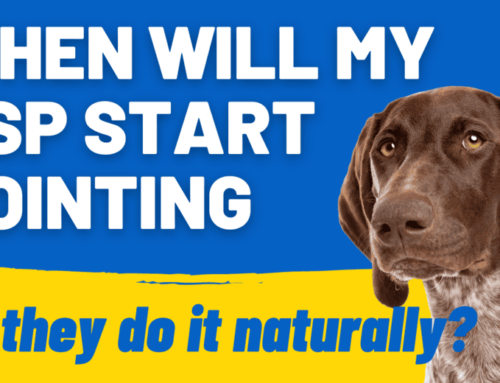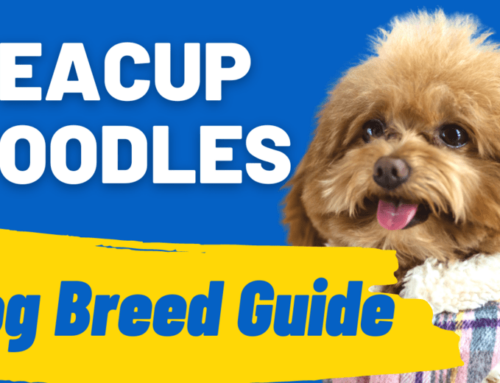Border Collies are sensitive, intelligent, working dogs that have become increasingly popular as companion dogs. But like many breeds, some Border Collies like their stuff, and they want to protect it. This is known as resource guarding.
As owners, we typically see that some Border Collies begin to protect and grow jealous of “their stuff” as puppies. They will usually grow aggressive around anything they see as a high-value item and they can become territorial.
This is often food, toys, and affection, with affection being the highest value item of all! But since resource guarding can lead to aggression, why do they do it, and how can we stop it?
Determine why is your Border Collie growling at you
Border Collies may growl at their owners for various reasons. It could be a form of communication, expressing discomfort, fear, or a warning sign. Or it could well be resource guarding!
Signs your BC is resource guarding might include the following:
- Eating faster when you go near them while they eat.
- Growling when you reach to take a toy away.
- Growling at someone else if they come near you when you are with your BC.
- Growling when being moved from a favorite spot, such as your bed.
- Growling when you ask to take something from their mouth, like a ball.
Understanding the context and body language accompanying the growl is crucial. If your BC isn’t growling because of the above reasons, then this post will likely be useful, What’s Your Dog Saying? A Dog Body Language Chart for Better Communication.
Why do Border Collies Resource Guard?
Border Collies are alert, active dogs with a highly developed sense of territory. This causes them to often be massive barkers when they sense intruders. It can also contribute to feeling jealous over their food or “their person.”
However, resource guarding is not specifically a Border Collie trait. It can occur in any breed; it is widespread, even normal, and mostly genetic. That is, if your puppy is resource guarding, they likely had a parent that did the same thing.
Just like a child who doesn’t want another child playing with his favorite toys, or how you may grow upset if somebody just reached into your plate at a restaurant and took your steak, resource guarding is a natural reaction.
Border Collies do it to protect their possessions through defensive body posture, growling, snapping, and even biting to keep other dogs or people away from their favorite things. So even if it is a natural reaction, it is still a problematic one that needs to be dealt with.
But dogs can resource guard different high-value items, including you! Therefore we need to look at how to stop it in its various forms.
Border Collie resource guarding against other dogs
Suppose your Border Collie Puppy is showing aggression towards other dogs. In that case, the first thing to check is that it isn’t a socialization issue.
If your puppy is still between that critical socialization window of 12 and 16 weeks, you can take them to a socialization school to help them learn the skills to interact with other dogs.
If they are a bit older, you can enlist the help of a behaviorist or trainer to teach them that other dogs aren’t anything to be frightened of or aggressive toward.
However, if your Border Collie is genuinely aggressive, you can read about how to help them here.
But suppose your Border Collie puppy is fine with other dogs until there is food, a favorite toy, or until you come closer. In that case, the problem is resource guarding.
Steps to dealing with resource guarding are primarily preventative.
- Don’t allow your puppy to socialize with other dogs if there are toys, food, or other high-value items lying around that may cause a fight.
- Be careful not to insert yourself into the mix when your puppy is playing with other dogs. This is especially true if you are nervous or anxious. Allow them the space to play without micromanaging the game.
- Do not allow your puppy to socialize while on the leash. Cultivate keeping their attention on the walk by consistent obedience training and keep them walking beside you calmly. Interacting with other dogs while restricted on the leash can cause them to become frustrated and foster leash aggression.
- Feed your puppy alone or in the crate, and give them chew toys or other toys where other dogs in the household can’t bother them.
In short, resource guarding against other dogs is one problem where prevention is better than the cure.
Border Collie resource guarding an owner or a person
If your Border Collie has begun to snap at other dogs or even people when they come close to you, this is quite a severe problem.
Too often, puppies may look cute and protective when doing this, and so the behavior is laughed off. Keep in mind that an adult Border Collie can give quite a nasty bite if they genuinely intend not to allow a person or another dog near you.
You also may want to consider if this is the kind of relationship you want with your dog. A dog that is resource guarding you sees you as a high-value item that they need to defend like a bone, rather than a pack or family member they respect.
If your Border Collie is resource guarding you or another person, several steps need to be taken to stop the behavior. Assuming it’s you, the first thing to do is learn the signs that your puppy is getting ready to “guard” you.
Signs your puppy is resource guarding you may include:
- Come into your space and try to control it. They may sit in front of you, over you, or on top of you and turn their attention outward, looking for the threat.
- Rather than having a loving, relaxed body that means they are simply giving you affection, their bodies might be stiff and tight. The mouth is typically closed and tense, which may turn into snarling and snapping if another dog or person approaches you.
- They may place a paw on you, lean on you, or otherwise try to communicate that they control the space around you.
- They will give a hard glare at any other dog or person approaching. This is usually the first warning signal.
The trick is to intervene before the behavior is allowed to escalate into conflict. To do this, you need to take several steps.
- Teach your dog to go away on command. This is to prevent them from guarding the space around you. The best way to do this is to use mats and teach them the place command. Having a place to send them to keeps them from putting up camp around you and guarding.
- While you can allow your puppy onto furniture with you, make sure you do this on your terms. A puppy who resource guards a person and can climb onto furniture beside you, without an invitation, can quickly insert themselves between you and another dog, and react aggressively if they come closer.
- Do not punish your puppy or escalate the conflict. Simply redirect them away from the space around you, which is the space that they are guarding. You can even turn this into a game by playing fetch to distract them and send them out of your space.
- Use obedience training such as down/stays and other markers to give your pup a set of expected behaviors to engage in that don’t allow them the time to take ownership of your space.
- Think ahead and make use of preventative environment management. So if you know your Border Collie does not like strangers coming near you, make sure your dog has exercised before visitors arrive and then settle them in a crate with a fun puzzle toy to keep them occupied.
- Ensure regular visitors and other household members take time to build a bond of trust with your puppy. This can be through play, treats, training, and loads of positive reinforcement. By building trust, your Border Collie may come to see other people as less of a threat.
Border Collies and other kinds of resource guarding
Resource guarding food
Suppose your Border Collie puppy is resource guarding food. In that case, the first thing to remember is that messing with their food, or taking it away from them while they are eating, will likely make the situation worse.
Your puppy is anxious that somebody will take away their food, so doing just that is just asking for unnecessary conflict.
If you’d like a comprehensive guide to fear-based or anxiety-based aggression, be sure to read our post on this subject here.
To stop food resource guarding food, you can take the following steps:
Start by teaching your Border Collie basic manners around food. This means teaching them to sit and wait for you to put the bowl down and only eat after giving the release command.
- Once your Border Collie has the food bowl, simply walk away. From here on, you are going to build trust gradually.
- Do not overdo it by repeating your actions over and over again, as it can make the experience a negative one. Only interrupt your puppy two or three times during a meal and then leave them in peace.
- By interrupting, we mean just walking past your dog and whistling or making a quick sharp noise to get their attention.
- Throw something better than the food they have on the floor beside the bowl and walk away.
- When your dog no longer gets tense when you come closer, or even looks up to see what you have for them, start trading them something better. Go to them, distract them with a juicy snack in one hand, and throw another snack in the bowl. Move away calmly and quickly. Never make a big deal out of it.
- Once your Border Collie realizes that you only come close to give them even better food, rather than to take the food away, you can move on to feeding a high-value treat with one hand, while quickly removing and replacing the bowl with the other.
- Aim to teach your dog that your approach does not mean the food bowl will be taken away. It only means bigger and better goodies, and if you take the food bowl away, it will be returned quickly, perhaps with even better treats inside.
Resource guarding a toy
You can engage in the same basics of building trust by trading the toy for something even better and building security that you will give the toy back at the appropriate time.
Like the food bowl, never just take the toy away, as it reinforces their insecurity that you will steal their things.
In addition, when guarding a toy, you can also introduce the “leave it” command, which has been shown to be successful when helping dogs overcome resource guarding.
A good way to mesh the “leave it” command with stopping resource guarding is to start when they have a low-value item they don’t care too much about.
Add the cue “leave it” or “drop it,” and pop a treat in their mouth when they do. When they drop the object, show no interest in it and leave it where it is. This builds the foundation to teach them to drop high-value items at a later stage.
If you need to remove the item immediately to prevent conflict, trade your dog for something better and quickly redirect their attention from the item with something even more fun or rewarding.
When they are distracted, remove the item quietly and put it away.
Finally, if your pup is prone to resource guarding a toy or a dog chewy, make sure they only have access to it when supervised and that they can’t be bothered by other dogs or people, particularly children.
Do not leave the toy lying around. It can create problems when you aren’t watching, and another dog comes sniffing about, or a child unknowingly comes too close.
If the item in question is a chew toy such as rawhide, try to only give it to them in their crate where they can gnaw on it in peace.
Resource guarding their bed
Suppose your Border Collie is resource guarding their bed. In that case, you will usually see them freeze and grow tense the second you come within a range that makes them uncomfortable. This might then be followed by a low warning growl and then escalate from there.
As with the food bowl, the best thing to do is not to create unnecessary conflict. You can build trust and de-escalate the situation through the following steps:
- If your dog is on their bed and freezes when you approach, take a few steps back to be outside the range that makes them uncomfortable.
- Throw a few treats onto the bed.
- Turn around and approach the bed again from a different angle and throw another few threats. Remember to keep things casual and calm.
- As your dog seems to relax with your approach, you can try throwing the treats from a little closer. Still keep coming and going from different angles.
- Over time, start throwing treats while getting and closer and closer to your dog while they are on their bed. Only do this while they stay relaxed. As they learn that your approach does not mean they will lose their bed and only means that you are bringing something positive, their anxiety about the bed should go down.
- Ensure all household members practice the same activity until everybody can stand next to your Border Collie while they are on their bed without them feeling threatened.
Final Thoughts
A dog that resource guards is not a bad dog, nor is it an aggressive dog. Resource guarding is a common behavior that can occur as easily in ultra-trained military dogs as it can in your elderly neighbor’s Maltese. Therefore, it is not an indication of bad training or any psychological problem in your dog.
Nevertheless, it is unwanted behavior, and at its worst, it can lead to a nip or a bite. So it is a problem that should be managed and addressed.
If your Border Collie puppy is resource guarding, the best thing to do is establish what they are guarding and use the steps listed above to minimize the behavior.




